MaryAnn Bernal's Blog, page 228
October 16, 2014
History Trivia - Queen Marie Antoinette beheaded during the French Revolution.
On October 16
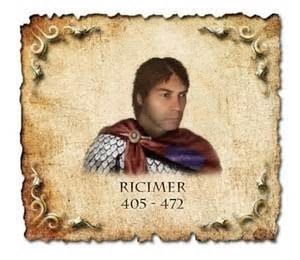
456 Magister militum (Master of the Soldiers) Flavius Ricimer defeated Emperor Avitus at Piacenza and became master of the Western Roman Empire. Ricimer was the first German who became a virtual king of Italy.

1551 Edward Seymour Duke of Somerset and Lord Protector of England during the minority reign of Edward VI was re-arrested. He was executed for felony in January 1552 after scheming to overthrow John Dudley's (Earl of Warwick) regime.
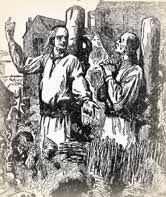
1555 The Protestant martyrs Bishop Hugh Latimer and Bishop Nicholas Ridley were burned at the stake for heresy in England.

1793 Queen Marie Antoinette was beheaded during the French Revolution.


456 Magister militum (Master of the Soldiers) Flavius Ricimer defeated Emperor Avitus at Piacenza and became master of the Western Roman Empire. Ricimer was the first German who became a virtual king of Italy.

1551 Edward Seymour Duke of Somerset and Lord Protector of England during the minority reign of Edward VI was re-arrested. He was executed for felony in January 1552 after scheming to overthrow John Dudley's (Earl of Warwick) regime.

1555 The Protestant martyrs Bishop Hugh Latimer and Bishop Nicholas Ridley were burned at the stake for heresy in England.

1793 Queen Marie Antoinette was beheaded during the French Revolution.

Published on October 16, 2014 06:21
October 15, 2014
Newfound South American Predator Snacked on Little Dinosaurs
by Charles Q. Choi
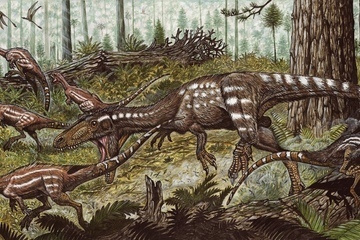
 The predatory dinosaur Tachiraptor admirabilis, unearthed in Venezuela, attacking the herbivorous dinosaur Laquintasaura.
The predatory dinosaur Tachiraptor admirabilis, unearthed in Venezuela, attacking the herbivorous dinosaur Laquintasaura.
Credit: Maurílio Oliveira
A puma-sized predatory dinosaur that may have snacked on its smaller cousins while stomping about an ancient rift valley dotted with erupting volcanoes has been discovered in Venezuela. The finding could shed light on the evolution of all carnivorous dinosaurs, researchers say.
The newfound fossil, from a dinosaur named Tachiraptor admirabilis, was unearthed from the northernmost branch of the Andes Mountains at the western border of Venezuela. The only bones from the dinosaur found so far are its shinbone and part of its hip bone, but these are enough to reveal that the beast was relatively small compared with its later, giant relatives, measuring about 4.9 to 6.5 feet (1.5 to 2 meters) long.
This two-legged species is the first predatory dinosaur unearthed in Venezuela. Its name derives from three sources: Táchira, the Venezuelan state where the fossil was discovered; raptor, Latin for thief, referring to the dinosaur's probable predatory habits; and "admirabilis," for Simón Bolívar's Admirable Campaign, which freed Venezuela from Spanish control, and in which La Grita, the town close to where the bones were found, played a strategic role. The fossils were discovered in early 2013, "near where a road was cut out of La Grita," said lead study author Max Langer, a vertebrate paleontologist at the University of São Paulo in Brazil. [See Images of an Omnivorous Dinosaur from Venezuela]
The fossils are about 200 million years old. This means the animal lived during the earliest part of the Jurassic period, when dinosaurs were beginning their rise to global dominance.
Dinosaurs originated about 230 million years ago, in the late Triassic period, but their reign began after the end-Triassic mass extinction event. One of the big five mass extinctions to affect life on Earth, this event killed off a number of other reptile groups that might have been competitors, along with at least half of all species the living on Earth. The most recent extinction event, the end-Cretaceous, occurred about 67 million years ago and ended the age of dinosaurs.
Back when Tachiraptor was alive, Venezuela was part of the supercontinent Pangaea, where most of the landmasses that make up today's continents were once concentrated.
"Pangaea was in the process of breaking up back then," Langer told Live Science. This area was a rift valley, a valley created by the rifting of the land, "like what we have in East Africa now, a rift that ultimately created the northern Atlantic Ocean," Langer said. "There was a lot of volcanic activity around, and in the valley, [there was] a meandering river, along which were patches of forest where this dinosaur lived."
Dinosaur skeletons are nearly unknown from northern South America. The only other dinosaur found in Venezuela is the two-legged, fox-sized plant-eater Laquintasaura venezuelae .
"Laquintasaura may have been part of Tachiraptor's diet," Langer said. "Tachiraptor was probably a generalist predator that ate anything it could get, such as small dinosaurs and other vertebrates, such as lizards."
Nearly all predatory dinosaurs, or theropods, belonged to a group of dinosaurs known as Averostra. This included tyrannosaurs and the ancestors of birds. However, features of T. admirabilis' shinbone revealed that it belonged to a sister group of Averostra.
"By having other theropods to compare Averostra to, it helps us understand more about Averostra and how that large group evolved," Langer said.
The find also suggests the equatorial belt of Pangaea may have played a pivotal role in theropod evolution. Past research suggested that the region was too inhospitable for dinosaurs during the early Jurassic.
"Pangaea was a sort of boomerang shape, and this dinosaur came from its equatorial warm belt, which more or less included northern South America, southern North America and Africa," Langer said. "To the north and south of this belt, you had big deserts. These findings suggest this area may not have been as barren as before thought, but may have hosted more diversity than the fossil record currently indicates."
The scientists plan to go back to Venezuela to search for more dinosaur bones; they also plan to dig in rocks of similar age in Tanzania and Brazil to learn more about the spread of dinosaurs across the world.
Live Science


 The predatory dinosaur Tachiraptor admirabilis, unearthed in Venezuela, attacking the herbivorous dinosaur Laquintasaura.
The predatory dinosaur Tachiraptor admirabilis, unearthed in Venezuela, attacking the herbivorous dinosaur Laquintasaura.Credit: Maurílio Oliveira
A puma-sized predatory dinosaur that may have snacked on its smaller cousins while stomping about an ancient rift valley dotted with erupting volcanoes has been discovered in Venezuela. The finding could shed light on the evolution of all carnivorous dinosaurs, researchers say.
The newfound fossil, from a dinosaur named Tachiraptor admirabilis, was unearthed from the northernmost branch of the Andes Mountains at the western border of Venezuela. The only bones from the dinosaur found so far are its shinbone and part of its hip bone, but these are enough to reveal that the beast was relatively small compared with its later, giant relatives, measuring about 4.9 to 6.5 feet (1.5 to 2 meters) long.
This two-legged species is the first predatory dinosaur unearthed in Venezuela. Its name derives from three sources: Táchira, the Venezuelan state where the fossil was discovered; raptor, Latin for thief, referring to the dinosaur's probable predatory habits; and "admirabilis," for Simón Bolívar's Admirable Campaign, which freed Venezuela from Spanish control, and in which La Grita, the town close to where the bones were found, played a strategic role. The fossils were discovered in early 2013, "near where a road was cut out of La Grita," said lead study author Max Langer, a vertebrate paleontologist at the University of São Paulo in Brazil. [See Images of an Omnivorous Dinosaur from Venezuela]
The fossils are about 200 million years old. This means the animal lived during the earliest part of the Jurassic period, when dinosaurs were beginning their rise to global dominance.
Dinosaurs originated about 230 million years ago, in the late Triassic period, but their reign began after the end-Triassic mass extinction event. One of the big five mass extinctions to affect life on Earth, this event killed off a number of other reptile groups that might have been competitors, along with at least half of all species the living on Earth. The most recent extinction event, the end-Cretaceous, occurred about 67 million years ago and ended the age of dinosaurs.
Back when Tachiraptor was alive, Venezuela was part of the supercontinent Pangaea, where most of the landmasses that make up today's continents were once concentrated.
"Pangaea was in the process of breaking up back then," Langer told Live Science. This area was a rift valley, a valley created by the rifting of the land, "like what we have in East Africa now, a rift that ultimately created the northern Atlantic Ocean," Langer said. "There was a lot of volcanic activity around, and in the valley, [there was] a meandering river, along which were patches of forest where this dinosaur lived."
Dinosaur skeletons are nearly unknown from northern South America. The only other dinosaur found in Venezuela is the two-legged, fox-sized plant-eater Laquintasaura venezuelae .
"Laquintasaura may have been part of Tachiraptor's diet," Langer said. "Tachiraptor was probably a generalist predator that ate anything it could get, such as small dinosaurs and other vertebrates, such as lizards."
Nearly all predatory dinosaurs, or theropods, belonged to a group of dinosaurs known as Averostra. This included tyrannosaurs and the ancestors of birds. However, features of T. admirabilis' shinbone revealed that it belonged to a sister group of Averostra.
"By having other theropods to compare Averostra to, it helps us understand more about Averostra and how that large group evolved," Langer said.
The find also suggests the equatorial belt of Pangaea may have played a pivotal role in theropod evolution. Past research suggested that the region was too inhospitable for dinosaurs during the early Jurassic.
"Pangaea was a sort of boomerang shape, and this dinosaur came from its equatorial warm belt, which more or less included northern South America, southern North America and Africa," Langer said. "To the north and south of this belt, you had big deserts. These findings suggest this area may not have been as barren as before thought, but may have hosted more diversity than the fossil record currently indicates."
The scientists plan to go back to Venezuela to search for more dinosaur bones; they also plan to dig in rocks of similar age in Tanzania and Brazil to learn more about the spread of dinosaurs across the world.
Live Science

Published on October 15, 2014 17:24
Incredible Science and Historical Artifacts Up for Auction
By Kelly Dickerson

The Apple-1 computer is the first personal computer model ever sold. There are only 15 working original models left.
Credit: Bonhams
A working Apple-1 computer, a window from the Manhattan Project's bomb-development site and a letter from Charles Darwin discussing the details of barnacle sex will go on sale this month at an auction of rare scientific artifacts.
The vintage Apple computer will lead off the technology section of the auction, which is sponsored by the British-owned auction house Bonhams. The Apple-1 model was the first personal computer with a single circuit board ever sold.
As of January, only 63 originals remain, and only 15 were still working as of 2000. Apple-1 expert Corey Cohen examined the model up for auction and certified that it is working and only needed minor replacement parts. It's valued at around half a million dollars. [See Photos of the Computer and Other Rare Items Up for Auction]
A viewing window from the Manhattan Project — valued at around $200,000 — is another big-ticket item at the auction. The Manhattan Project was a secret government operation during World War II designed to develop the world's first atomic bomb, and included many famous scientists like J. Robert Oppenheimer, Albert Einstein and Richard Feynman. The artifact comes from the project's Hanford site in Washington state, where physicists developed the atomic bomb dropped on Nagasaki, Japan. The window is about 54 inches by 36 inches (137 centimeters by 91 centimeters), with a pane of heavy leaded glass 6 in. (15 cm) thick, to protect the scientists from radiation from the atomic-bomb experiments.
A collection of astronomer George Willis Ritchey's deep-space photographs, books and telescope blueprints is also on sale. Ritchey is the co-inventor of the reflector telescope, the basic design of which is still used for most modern telescopes and observatories. Ritchey's collection is valued around half a million dollars.
The auction will also feature a natural-history collection, including an 1857 letter from Charles Darwin to a man who supposedly witnessed barnacle sex. Proportionally speaking, barnacles have the largest penis in the animal kingdom, and in the letter, Darwin says he would be "extremely much obliged" to hear the details of the act. The document is estimated to sell for between $20,000 and $30,000, according to Bonhams.
Bidding will open Oct. 22 at 1 p.m. ET at the company's New York showroom. The full catalog for the auction is now posted on Bonhams' website.
Live Science


The Apple-1 computer is the first personal computer model ever sold. There are only 15 working original models left.
Credit: Bonhams
A working Apple-1 computer, a window from the Manhattan Project's bomb-development site and a letter from Charles Darwin discussing the details of barnacle sex will go on sale this month at an auction of rare scientific artifacts.
The vintage Apple computer will lead off the technology section of the auction, which is sponsored by the British-owned auction house Bonhams. The Apple-1 model was the first personal computer with a single circuit board ever sold.
As of January, only 63 originals remain, and only 15 were still working as of 2000. Apple-1 expert Corey Cohen examined the model up for auction and certified that it is working and only needed minor replacement parts. It's valued at around half a million dollars. [See Photos of the Computer and Other Rare Items Up for Auction]
A viewing window from the Manhattan Project — valued at around $200,000 — is another big-ticket item at the auction. The Manhattan Project was a secret government operation during World War II designed to develop the world's first atomic bomb, and included many famous scientists like J. Robert Oppenheimer, Albert Einstein and Richard Feynman. The artifact comes from the project's Hanford site in Washington state, where physicists developed the atomic bomb dropped on Nagasaki, Japan. The window is about 54 inches by 36 inches (137 centimeters by 91 centimeters), with a pane of heavy leaded glass 6 in. (15 cm) thick, to protect the scientists from radiation from the atomic-bomb experiments.
A collection of astronomer George Willis Ritchey's deep-space photographs, books and telescope blueprints is also on sale. Ritchey is the co-inventor of the reflector telescope, the basic design of which is still used for most modern telescopes and observatories. Ritchey's collection is valued around half a million dollars.
The auction will also feature a natural-history collection, including an 1857 letter from Charles Darwin to a man who supposedly witnessed barnacle sex. Proportionally speaking, barnacles have the largest penis in the animal kingdom, and in the letter, Darwin says he would be "extremely much obliged" to hear the details of the act. The document is estimated to sell for between $20,000 and $30,000, according to Bonhams.
Bidding will open Oct. 22 at 1 p.m. ET at the company's New York showroom. The full catalog for the auction is now posted on Bonhams' website.
Live Science

Published on October 15, 2014 16:58
Scribbler Tales included in the Booktrack Studio Hot Reads List - October 2014

October's Hot ReadsEvery month, we bring you a selection of featured titles on Booktrack. Here are your hot reads for October!
 Hot Reads
Hot Reads 

Pride & PrejudiceJane Austen
It's 19th century England. When Elizabeth meets the impossible Mr Darcy, romantic sparks fly but misunderstandings ensue.

Demon LordT C Southwell
The Demon Lord will destroy the Overworld, unless a young healer can turn him from his savage path. Mirra, innocent of her quest, is placed in Bane's path.

Who is Shayla HackerEvan Kilgore
A lonely man dials a random phone number, a 17-year-old is abandoned, a man flees on the eve of his wedding. The same question binds them.

When We LoveLynette Ferreira
Chrissie Taylor has a big dilemma. She received a scholarship to the Cornwall Academy. When she meets handsome Vincent, her world is turned upside down.

Demon WolfDanielle Harjo
Cursed at birth, a young wolf will have to learn to survive the harsh realities of life. Will he ever be able to prove his worth to his pack, his alpha and his father?

Eye of the PredatorMatthew J. Pallamary
Young zoologist Erik Simpson has no memory of his life before age 16. As his 30th birthday approaches, he begins to be haunted by dreams.

Black BeautyAnna Sewell
Follow Black Beauty from his days as a colt through to his experiences at the hands of different owners. A tale for animal lovers.

Scribbler TalesMary Ann Bernal
Audrey learns of Paul's duplicity when human cloning experiments go awry. A collection of short stories in a mix of genres.

LuckyG.W. Pomichter
Lucky is returning home from WWII to restart his life as an L.A.P.D cop, when a case nobody wants leads him to self-discovery.Booktrack Studio

Published on October 15, 2014 15:40
History Trivia - King Henry VIII of England orders bowling lanes at Whitehall
October 15

70 BC, Virgil was born. He is considered to be one of the greatest poets of the Roman Empire.
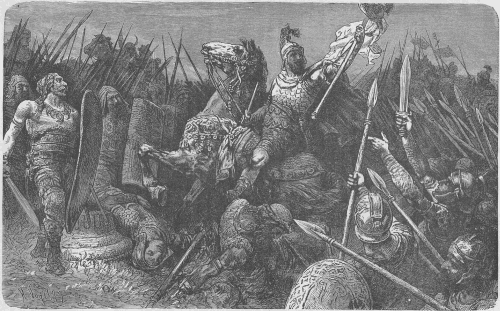
533 Byzantine general Belisarius made his formal entry into Carthage, having conquered it from the Vandals.

1389 Pope Urban VI died. The election of Urban sparked the Western Schism, which lasted nearly 40 years.
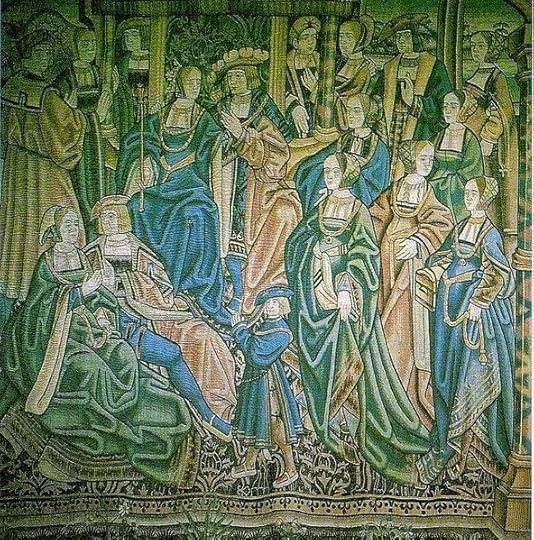
1501 English crown prince Arthur married Catherine of Aragon.
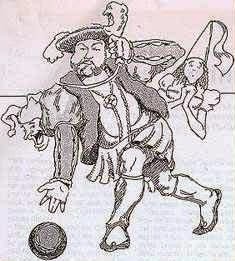
1520 King Henry VIII of England ordered bowling lanes at Whitehall.

1537 Prince Edward Tudor was baptized.


70 BC, Virgil was born. He is considered to be one of the greatest poets of the Roman Empire.

533 Byzantine general Belisarius made his formal entry into Carthage, having conquered it from the Vandals.

1389 Pope Urban VI died. The election of Urban sparked the Western Schism, which lasted nearly 40 years.

1501 English crown prince Arthur married Catherine of Aragon.

1520 King Henry VIII of England ordered bowling lanes at Whitehall.

1537 Prince Edward Tudor was baptized.

Published on October 15, 2014 05:01
October 14, 2014
Bronze Warrior Chariot Discovery Is 'Find of a Lifetime'
by Stephanie Pappas Live Science
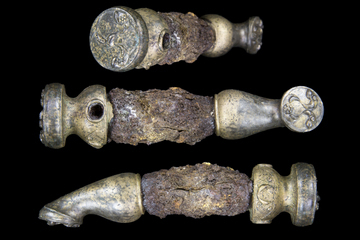 A linch pin (shown from three angles) from an Iron Age chariot that were discovered at the Burrough Hill Iron Age Hillfort in Leicestershire, England
A linch pin (shown from three angles) from an Iron Age chariot that were discovered at the Burrough Hill Iron Age Hillfort in Leicestershire, England
Credit: University of Leicester
More than 2,000 years ago, pieces of an Iron Age chariot were burnt and buried, perhaps as a religious offering. Now, archaeologists have discovered the bronze remains of this sacrifice.
Digging near Melton Mowbray in Leicestershire, England, an archaeology team discovered a trove of bronze chariot fittings dating back to the second or third century B.C. The remains were discovered at the Burrough Hill Iron Age Hillfort, a fortified hilltop structure that was once surrounded by farms and settlements. Though humans lived in the area beginning around 4000 B.C., it was used most heavily between about 100 B.C. and A.D. 50, according to the University of Leicester.
"This is the most remarkable discovery of material we made at Burrough Hill in the five years we worked on the site," University of Leicester archaeologist Jeremy Taylor said in a statement. "This is a very rare discovery and a strong sign of the prestige of the site." [See Images of the Iron Age Chariot's Remains]
Burnt offering
Taylor co-directs the field project at Burrough Hill, which is used to train archaeology students. It was four of these archaeology students who first found a piece of bronze near an Iron Age house within the Burrough Hill fort. More bronze pieces were found nearby.
The pieces are the metal remains of a chariot that once belonged to a warrior or noble, according to university archaeologists. They include linchpins with decorated end caps, as well as rings and fittings that would have held harnesses. One linchpin is decorated with three wavy lines radiating from a single point, a triskele symbol that is almost like the modern flag for the Isle of Man.
"The atmosphere at the dig on the day was a mix of 'tremendously excited' and 'slightly shell-shocked,'" Taylor said. "I have been excavating for 25 years, and I have never found one of these pieces — let alone a whole set. It is a once-in-a-career discovery."
The pieces were found upon a layer of chaff, which may have provided fuel for the burning ritual. The chariot pieces were put into a box and then covered with cinder and slag after being set on fire. This may have been a ritual marking the dismantling or closing of a home at the fort, or it could have honored the change of seasons, University of Leicester archaeologists suspect.
Bronze and iron
Alongside the chariot pieces, the researchers found a set of iron tools, which were placed around the parts before they were burned.
"The function of the iron tools is a bit of a mystery, but given the equestrian nature of the hoard, it is possible that they were associated with horse grooming," Burrough Hill project co-director John Thomas said in a statement. "One piece, in particular, has characteristics of a modern curry comb, while two curved blades may have been used to maintain horses' hooves or manufacture harness parts."
The pieces will be on display temporarily at the Melton Carnegie Museum in Melton Mowbray from Oct. 18 to Dec. 13.
"Realizing that I was actually uncovering a hoard that was carefully placed there hundreds of years ago made it the find of a lifetime," University of Leicester student Nora Battermann, who was one of the four students to make the find, said in a statement. "Looking at the objects now that they have been cleaned makes me even more proud, and I can't wait for them to go on display."

 A linch pin (shown from three angles) from an Iron Age chariot that were discovered at the Burrough Hill Iron Age Hillfort in Leicestershire, England
A linch pin (shown from three angles) from an Iron Age chariot that were discovered at the Burrough Hill Iron Age Hillfort in Leicestershire, EnglandCredit: University of Leicester
More than 2,000 years ago, pieces of an Iron Age chariot were burnt and buried, perhaps as a religious offering. Now, archaeologists have discovered the bronze remains of this sacrifice.
Digging near Melton Mowbray in Leicestershire, England, an archaeology team discovered a trove of bronze chariot fittings dating back to the second or third century B.C. The remains were discovered at the Burrough Hill Iron Age Hillfort, a fortified hilltop structure that was once surrounded by farms and settlements. Though humans lived in the area beginning around 4000 B.C., it was used most heavily between about 100 B.C. and A.D. 50, according to the University of Leicester.
"This is the most remarkable discovery of material we made at Burrough Hill in the five years we worked on the site," University of Leicester archaeologist Jeremy Taylor said in a statement. "This is a very rare discovery and a strong sign of the prestige of the site." [See Images of the Iron Age Chariot's Remains]
Burnt offering
Taylor co-directs the field project at Burrough Hill, which is used to train archaeology students. It was four of these archaeology students who first found a piece of bronze near an Iron Age house within the Burrough Hill fort. More bronze pieces were found nearby.
The pieces are the metal remains of a chariot that once belonged to a warrior or noble, according to university archaeologists. They include linchpins with decorated end caps, as well as rings and fittings that would have held harnesses. One linchpin is decorated with three wavy lines radiating from a single point, a triskele symbol that is almost like the modern flag for the Isle of Man.
"The atmosphere at the dig on the day was a mix of 'tremendously excited' and 'slightly shell-shocked,'" Taylor said. "I have been excavating for 25 years, and I have never found one of these pieces — let alone a whole set. It is a once-in-a-career discovery."
The pieces were found upon a layer of chaff, which may have provided fuel for the burning ritual. The chariot pieces were put into a box and then covered with cinder and slag after being set on fire. This may have been a ritual marking the dismantling or closing of a home at the fort, or it could have honored the change of seasons, University of Leicester archaeologists suspect.
Bronze and iron
Alongside the chariot pieces, the researchers found a set of iron tools, which were placed around the parts before they were burned.
"The function of the iron tools is a bit of a mystery, but given the equestrian nature of the hoard, it is possible that they were associated with horse grooming," Burrough Hill project co-director John Thomas said in a statement. "One piece, in particular, has characteristics of a modern curry comb, while two curved blades may have been used to maintain horses' hooves or manufacture harness parts."
The pieces will be on display temporarily at the Melton Carnegie Museum in Melton Mowbray from Oct. 18 to Dec. 13.
"Realizing that I was actually uncovering a hoard that was carefully placed there hundreds of years ago made it the find of a lifetime," University of Leicester student Nora Battermann, who was one of the four students to make the find, said in a statement. "Looking at the objects now that they have been cleaned makes me even more proud, and I can't wait for them to go on display."

Published on October 14, 2014 07:16
'Oldest Parisian': Neanderthal Fossil Suggests Hunting Injury
By Laura Geggel
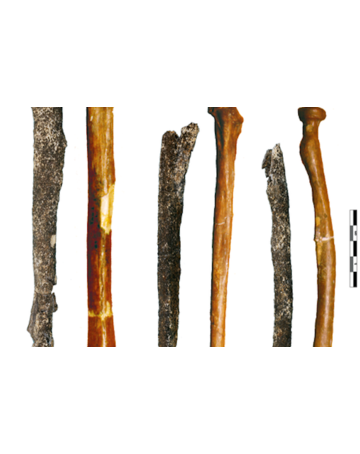 The Tourville remains (left) alongside to the left arm bones of a female Neanderthal.
The Tourville remains (left) alongside to the left arm bones of a female Neanderthal.
Credit: Faivre J-P, Maureille B, Bayle P, Crevecoeur I, et al. (2014) Middle Pleistocene Human Remains from Tourville-la-Rivière (Normandy, France) and Their Archaeological Context. PLoS ONE 9(10): e104111. doi:10.1371/journal.pone.0104111
Three arm bones from a prehistoric individual, likely a Neanderthal, were uncovered in the Seine Valley of northern France, suggesting that Neanderthals had a temporary camp along the river 200,000 years ago.
The long left arm bones, dated at 200,000 years old, are the oldest human ancestor remains ever to be discovered in Tourville-la-Rivière, about 72 miles (116 kilometers) northwest of Paris. Fossils from this time period are rare, and may help fill in gaps about the evolution of humans and their close relatives, the researchers said.
"These are the oldest fossils found near Paris. It's the oldest Parisian, if you like," study researcher Bruno Maureille, at the Université de Bordeaux in Talence, France, told the BBC.
The bones, found in September 2010, consist of a humerus, radius and ulna from a left arm. Based on their size, the bones probably belonged to an adult or older adolescent, the researchers said. [The 10 Biggest Mysteries of the First Humans]
The left humerus shows a curious injury that may indicate signs of muscle damage near the shoulder, possibly from doing a repetitive action, such as throwing or hammering, said study researcher Erik Trinkaus, a professor of anthropology at Washington University in St. Louis.
Trinkaus and his colleagues examined the humerus in detail, finding that it measures 9.1 inches (23.2 centimeters) and has a bony crest 1.6 inches (4 cm) long. Computer tomography scans suggest the crest may be evidence of an injury to the deltoid muscle at the owner's shoulder.
The individual may have gotten the injury from throwing a spear while hunting, even though all of the spears anthropologists have found from that time period are large and heavy, Trinkaus said.
If the injury is indicative of overuse from throwing, the newly found humerus would provide evidence that early humans and their relatives may have thrown spears 200,000 years ago, he said.
That interpretation is "controversial" but plausible, said Brian Richmond, a curator of anthropology at the American Museum of Natural History in New York, who was not involved in the study. "It looks like the bone kind of grew out [from the arm], probably from some damage where the muscle was attached to it," Richmond told Live Science.
It's unclear what caused the injury, but "they're arguing that this may be due to repetitive use, possibly throwing," Richmond said.
The guess isn't a bad one, he said. Humans are unusually good at throwing, whereas other animals, such as chimpanzees and apes, can't throw as accurately or as fast people can. "We seem to have an anatomy that's well designed for that," Richmond said. "And that anatomy probably goes back to as far as the Neanderthals."
The Neanderthals are the closest extinct relatives of modern humans, and went extinct about 40,000 years ago. There's evidence that human ancestors and relatives were capable hunters 200,000 years ago, so it's plausible that the individual was injured from repetitively throwing something, such as a hunting weapon, Richmond said.
"It's a provocative idea that as far back as 200,000 years ago, we see [bone] stress that may have resulted from repetitive throwing," he said. "It raises interesting questions about just how these early humans hunted."
Live Science

 The Tourville remains (left) alongside to the left arm bones of a female Neanderthal.
The Tourville remains (left) alongside to the left arm bones of a female Neanderthal.Credit: Faivre J-P, Maureille B, Bayle P, Crevecoeur I, et al. (2014) Middle Pleistocene Human Remains from Tourville-la-Rivière (Normandy, France) and Their Archaeological Context. PLoS ONE 9(10): e104111. doi:10.1371/journal.pone.0104111
Three arm bones from a prehistoric individual, likely a Neanderthal, were uncovered in the Seine Valley of northern France, suggesting that Neanderthals had a temporary camp along the river 200,000 years ago.
The long left arm bones, dated at 200,000 years old, are the oldest human ancestor remains ever to be discovered in Tourville-la-Rivière, about 72 miles (116 kilometers) northwest of Paris. Fossils from this time period are rare, and may help fill in gaps about the evolution of humans and their close relatives, the researchers said.
"These are the oldest fossils found near Paris. It's the oldest Parisian, if you like," study researcher Bruno Maureille, at the Université de Bordeaux in Talence, France, told the BBC.
The bones, found in September 2010, consist of a humerus, radius and ulna from a left arm. Based on their size, the bones probably belonged to an adult or older adolescent, the researchers said. [The 10 Biggest Mysteries of the First Humans]
The left humerus shows a curious injury that may indicate signs of muscle damage near the shoulder, possibly from doing a repetitive action, such as throwing or hammering, said study researcher Erik Trinkaus, a professor of anthropology at Washington University in St. Louis.
Trinkaus and his colleagues examined the humerus in detail, finding that it measures 9.1 inches (23.2 centimeters) and has a bony crest 1.6 inches (4 cm) long. Computer tomography scans suggest the crest may be evidence of an injury to the deltoid muscle at the owner's shoulder.
The individual may have gotten the injury from throwing a spear while hunting, even though all of the spears anthropologists have found from that time period are large and heavy, Trinkaus said.
If the injury is indicative of overuse from throwing, the newly found humerus would provide evidence that early humans and their relatives may have thrown spears 200,000 years ago, he said.
That interpretation is "controversial" but plausible, said Brian Richmond, a curator of anthropology at the American Museum of Natural History in New York, who was not involved in the study. "It looks like the bone kind of grew out [from the arm], probably from some damage where the muscle was attached to it," Richmond told Live Science.
It's unclear what caused the injury, but "they're arguing that this may be due to repetitive use, possibly throwing," Richmond said.
The guess isn't a bad one, he said. Humans are unusually good at throwing, whereas other animals, such as chimpanzees and apes, can't throw as accurately or as fast people can. "We seem to have an anatomy that's well designed for that," Richmond said. "And that anatomy probably goes back to as far as the Neanderthals."
The Neanderthals are the closest extinct relatives of modern humans, and went extinct about 40,000 years ago. There's evidence that human ancestors and relatives were capable hunters 200,000 years ago, so it's plausible that the individual was injured from repetitively throwing something, such as a hunting weapon, Richmond said.
"It's a provocative idea that as far back as 200,000 years ago, we see [bone] stress that may have resulted from repetitive throwing," he said. "It raises interesting questions about just how these early humans hunted."
Live Science

Published on October 14, 2014 07:08
Diane Turner - London Rocks - 14.10.2014
Published on October 14, 2014 06:05
History Trivia - William the Conqueror defeats King Harold II of England
October 14
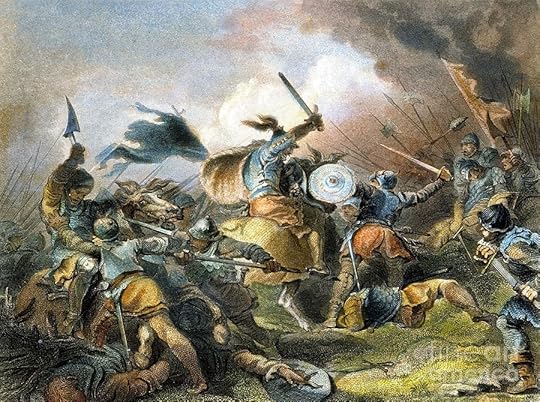
1066 Norman Conquest: Battle of Hastings – In England on Senlac Hill, seven miles from Hastings, the Norman forces of William the Conqueror defeated the English army and killed King Harold II of England.
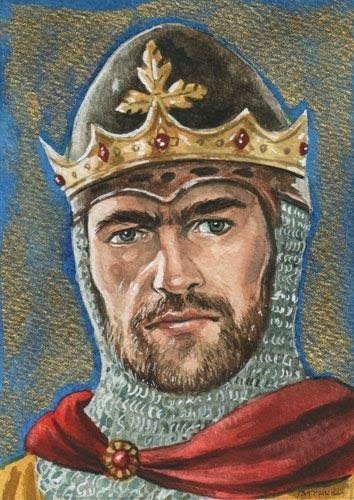
1322 Robert the Bruce of Scotland defeated King Edward II of England at Byland, forcing Edward to accept Scotland's independence.
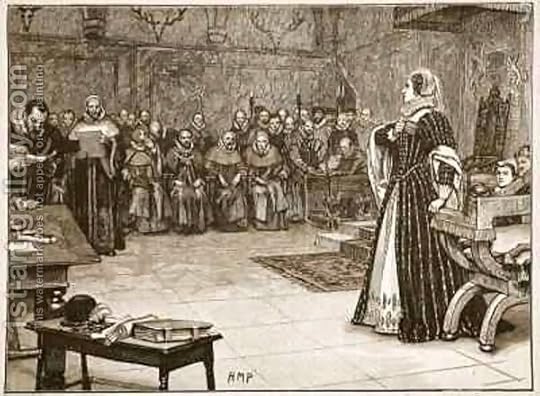
1586 Mary, Queen of Scots, went on trial for conspiracy against Elizabeth I of England.


1066 Norman Conquest: Battle of Hastings – In England on Senlac Hill, seven miles from Hastings, the Norman forces of William the Conqueror defeated the English army and killed King Harold II of England.

1322 Robert the Bruce of Scotland defeated King Edward II of England at Byland, forcing Edward to accept Scotland's independence.

1586 Mary, Queen of Scots, went on trial for conspiracy against Elizabeth I of England.

Published on October 14, 2014 04:30
October 13, 2014
Scribbler Tales (Volume Two) by Mary Ann Bernal available for pre-order

“Scribbler Tales is a unique mix of genres in one anthology rich with tension, humanity and genuine emotion. Unconventional settings and unexpected twists are bound to leave you pondering long after you close this book.” Madeline’s personal feelings clouds her judgment in Broken Promises where she must choose between love and obeying the law. When the guilty walk, a vigilante executes the criminals in Deception. Endgamefinds a government researcher running for her life after discovering a horrific CIA secret in the isolated facility. A modern day Don Juan’s life is turned upside down in Malice when he is falsely accused of rape. In The Portrait, Holliday is obsessed with a formidable ancestor whose spirit wishes to possess her soul.
Amazon Link

Published on October 13, 2014 16:25




